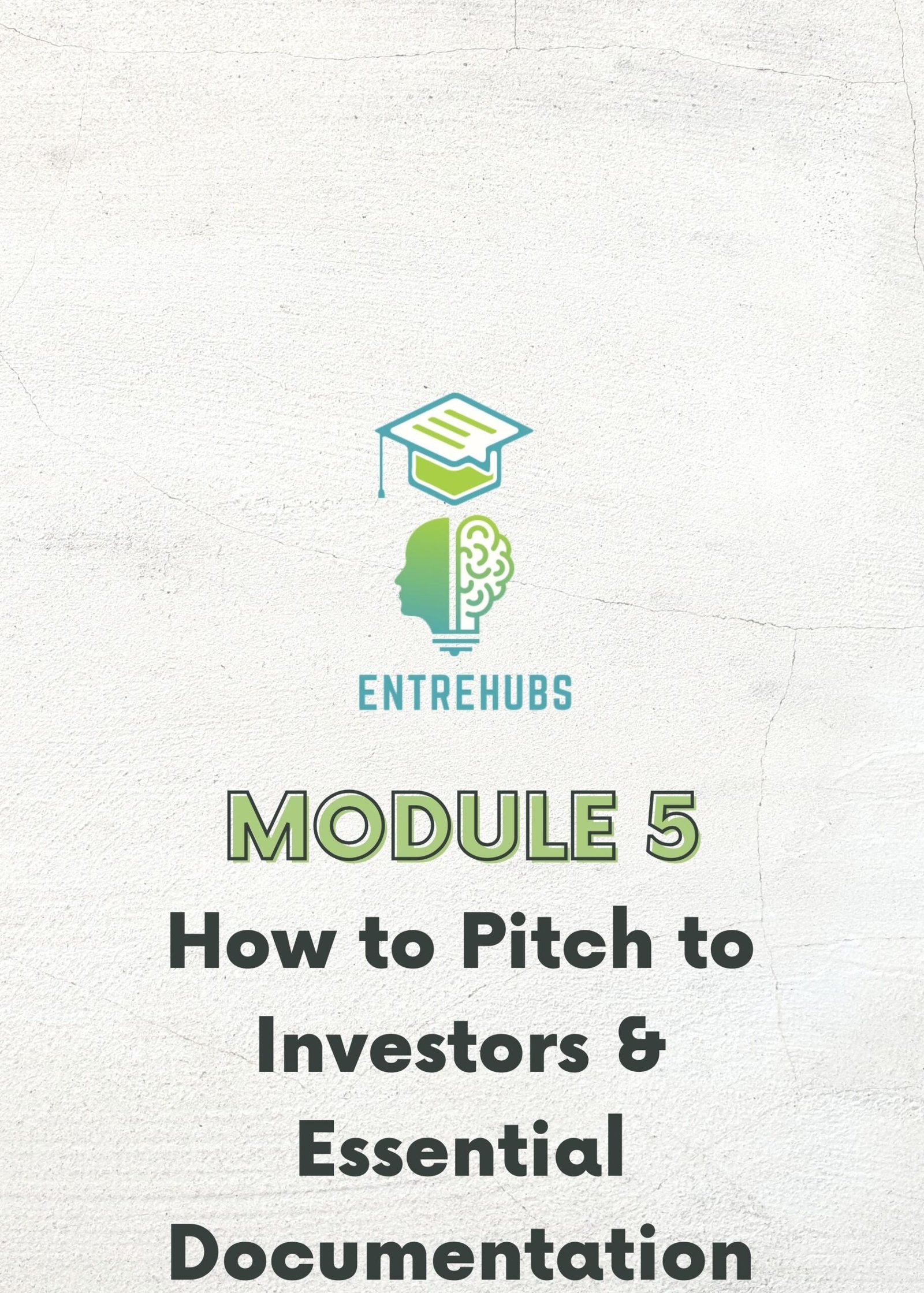How to Pitch to Investors

About Course
Aim: The aim of this module is to provide educators with the the knowledge, tools, and pedagogical strategies to ensure their students understand what they need to be prepared for when pitching to investors, the subtleties of pitching and how to document their ideas. Through this module, educators will learn how to guide students to: know what should be ready before pitching to the investor: Providing students with the preparation that can be most effective in a limited but very valuable time to make a pitch. It includes not only idea or appearance but also psychological preparation. know the details to be considered when pitching to the investor: Understanding in detail what information to provide to the investor, with how much detail and how to present it. It also includes the preparations to be made by the students beyond a simple presentation. understand which documents and how to present them in order to convince the investor: Understanding by the students which documents and which details they need to know in order to convince the investors. It also includes the way documents are presented and the use of visual and audio elements. be able to judge from an investor's point of view: Enabling students to evaluate themselves from an investor's point of view by using their empathy and communication skills. It includes the use of social skills. be aware of what the do's and don'ts are: Being able to clearly identify what investors want to hear and what they don't want to hear, especially during the pitch. It also includes the most common mistakes and the most effective ways. Learning Objectives: By the end of this module, educators will be able to:
-
Understand the investor mindset: Discover about the motivations, goals, and decision-making criteria of investors to tailor pitches effectively.
-
Craft an effective pitch: Develop the skills to create a compelling and concise pitch that captures the attention of investors and communicates the value proposition clearly.
-
Structure the pitch presentation: Understand the key components of a pitch deck, including problem identification, solution presentation, market analysis, business model, traction, team, and financial projections.
-
Master presentation skills: Develop effective presentation skills, including public speaking, storytelling, and engaging with investors to convey confidence and credibility.
-
Create essential documentation: Gain proficiency in creating essential documents such as pitch decks, executive summaries, business plans, and financial forecasts that support the pitch presentation.
-
Handle Q&A and objections: Develop strategies to anticipate and address investor questions, concerns, and objections effectively during pitch presentations and follow-up discussions.
Learning outcomes: Upon completing this module, educators will:
-
gain insights into the mindset and expectations of investors, including what they look for in potential investment opportunities, their risk tolerance, and their desired return on investment.
-
learn how to create and deliver a compelling pitch that effectively communicates their business idea, value proposition, market opportunity, competitive advantage, and financial projections.
-
earn to identify and understand the key components of a pitch deck, including problem identification, solution presentation, market analysis, business model, traction, team, and financial projections, facilitating the creation of well-structured and informative pitch presentations.
-
develop effective presentation skills, including public speaking, storytelling, and engaging with investors, enabling them to convey confidence and credibility during pitch presentations.
-
gain proficiency in creating essential documents such as pitch decks, executive summaries, business plans, and financial forecasts that support and enhance the effectiveness of pitch presentations.
-
develop strategies to anticipate and address investor questions, concerns, and objections effectively during pitch presentations and follow-up discussions, enhancing their ability to navigate investor interactions successfully.
Securing investment is a crucial milestone in the growth of any startup or business. However, investors are approached by numerous companies seeking funding, which means entrepreneurs must stand out by delivering a clear, compelling, and confident pitch. This module, “How to Pitch to Investors & Essential Documentation,” is designed to provide the necessary skills and tools to not only craft a persuasive pitch but also prepare the critical documentation that underpins a successful investment process. Through this module, you will: - Gain insights into the investor mindset, including their key motivations and decision-making criteria. - Learn how to structure and deliver a compelling pitch presentation that captures attention and addresses investors' concerns. - Master the art of creating essential documents, such as pitch decks, business plans, executive summaries, and financial projections, which play a crucial role in the investment process. - Understand the legal and documentation requirements typically requested by investors, such as term sheets and due diligence materials. This module is both informative and practical. You will engage with case studies, real-world examples, and step-by-step guides that will help you navigate the complex world of investor relations with confidence.
Course Content
Section 1 – Understanding the Investor Mindset
-
Investor Motivations
00:00 -
Types of Investors
00:00 -
Investor Decision-Making Criteria
00:00
Section 2 – Key Components of an Effective Pitch
Section 3 – Mastering Presentation Skills
Section 4 – Creating Essential Documentation
Section 5 – Handling Q&A and Objections
Section 6 – Conclusion
References
Quiz
Activities
Student Ratings & Reviews

No Review Yet

